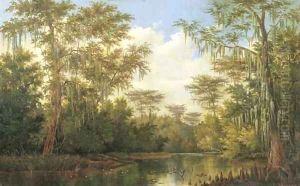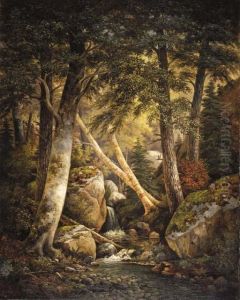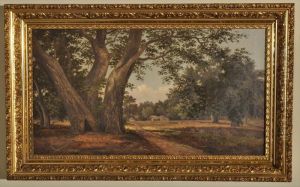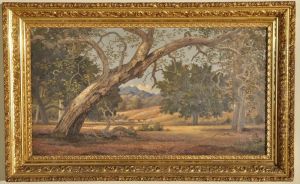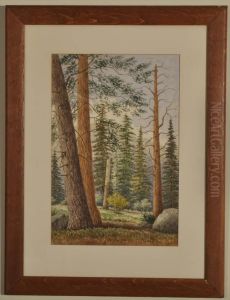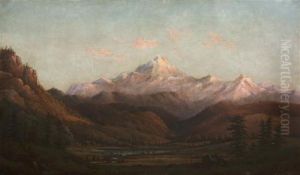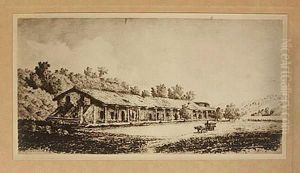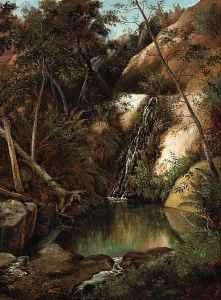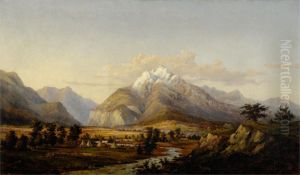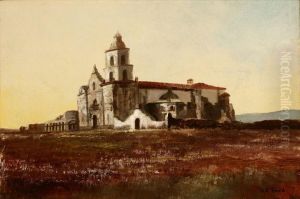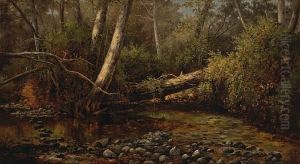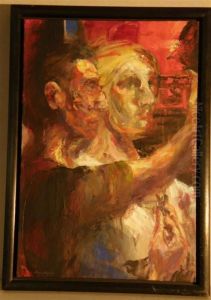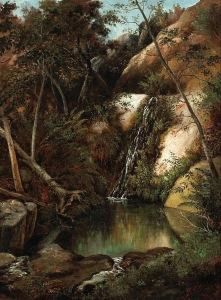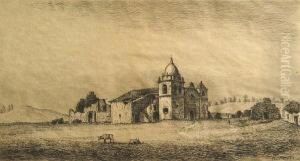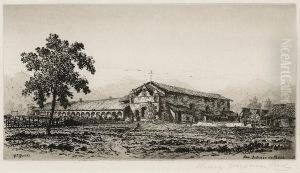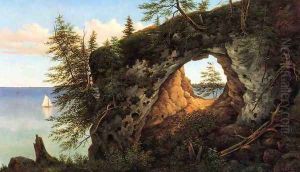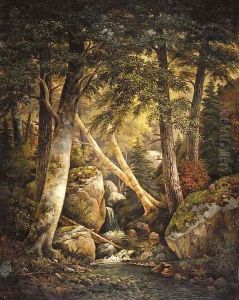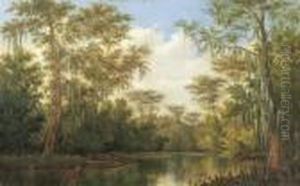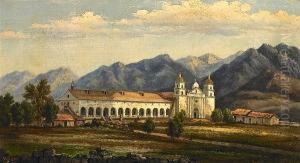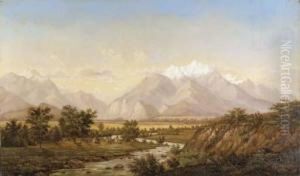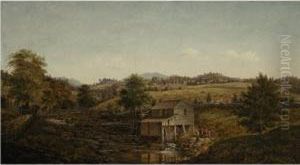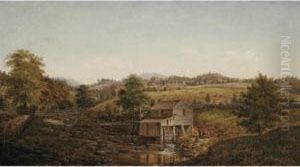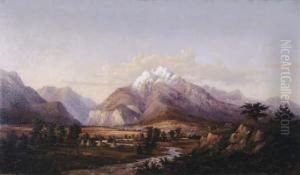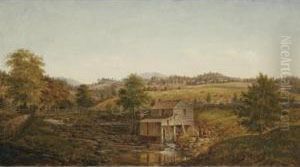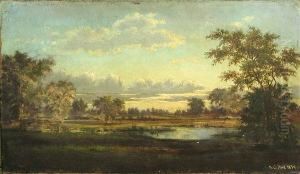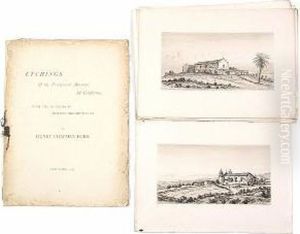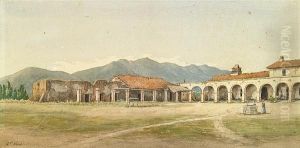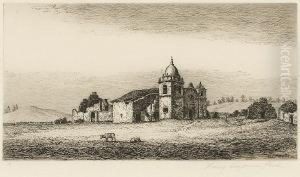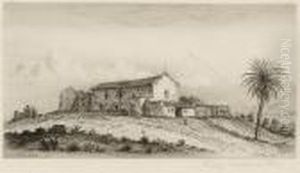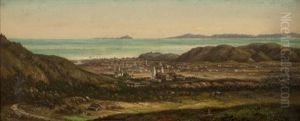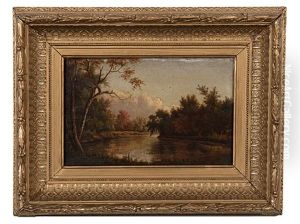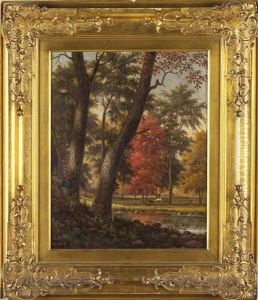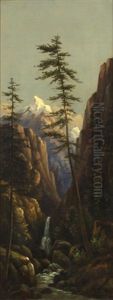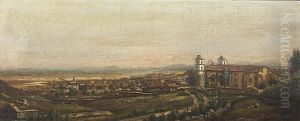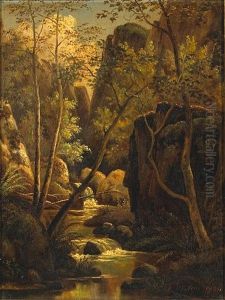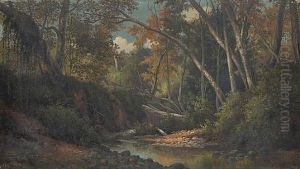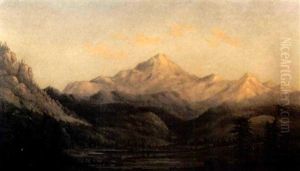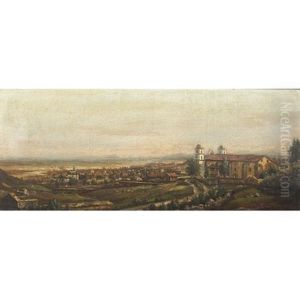Henry Chapman Ford Paintings
Henry Chapman Ford was an American painter and etcher born on January 16, 1828, in Livonia, New York. He grew up in a period of American history marked by the westward expansion and the burgeoning of American art and culture. Ford developed a keen interest in art at an early age and embarked on his artistic journey by studying at the National Academy of Design in New York City.
Ford's artistry was diverse, and he worked in various media, including oil painting, watercolor, and etching. He is particularly noted for his landscape paintings, which often depicted the American West with a focus on its grandeur and natural beauty. In the 1860s, he traveled to Europe, where he studied the works of the Old Masters and was influenced by their techniques and styles, which he later incorporated into his own work.
During his travels in 1875, Ford visited California, where he was deeply impressed by the state's majestic landscapes, especially those of the Yosemite Valley and the California missions. These subjects became the central themes of his most celebrated works. He produced a series of etchings of the California missions, which was highly regarded for its accuracy and attention to historical detail. These works played a vital role in documenting the architectural heritage of California during a time when many of the missions were in disrepair and at risk of being lost to history.
Henry Chapman Ford's work was widely exhibited during his lifetime, and he was recognized as a significant figure in the American art scene of the 19th century. His commitment to capturing the essence of the American landscape made a lasting contribution to the visual record of the nation's evolving identity. Ford passed away on July 8, 1894, in Pasadena, California. His legacy lives on through his works, which are held in various collections and museums, offering a glimpse into the rich tapestry of America's natural and architectural history.
